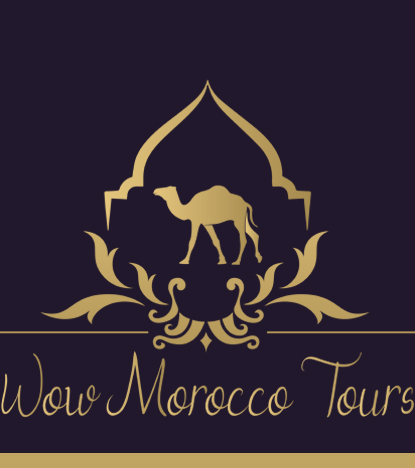
How to Visit Casablanca for the First Time: A Complete Travel Guide
Casablanca—Morocco’s cosmopolitan heart and its largest city, is often the first stop for international travelers arriving in the Kingdom. A city that masterfully blends modernity with tradition, Casablanca offers an entirely different vibe than the rest of Morocco’s more historic or rural destinations. From its bustling business districts and chic beach clubs to its colonial architecture and the iconic Hassan II Mosque, Casablanca is a city of contrasts waiting to be explored.
Whether you’re planning a short layover or an extended stay, this comprehensive guide will show you how to visit Casablanca, what to see, where to eat, and how to make the most of your time in this fascinating Moroccan city.
Why Visit Casablanca?
While cities like Marrakech, Fes, and Chefchaouen often steal the spotlight, Casablanca offers a unique urban experience unlike anywhere else in Morocco. Here’s why you should consider visiting Casablanca:
-
Cultural Crossroads: Casablanca is a melting pot of French colonial legacy, traditional Moroccan culture, and modern lifestyle.
-
Architectural Marvels: From Art Deco facades to contemporary structures, the city’s architecture is a visual feast.
-
Coastal Beauty: Located along the Atlantic Ocean, Casablanca boasts lovely beaches and seaside promenades.
-
Gastronomic Diversity: A hub for both Moroccan and international cuisine.
-
Ease of Travel: Home to the country’s largest airport, Mohammed V International Airport, making it a natural entry or exit point.
Best Time to Visit Casablanca
Casablanca enjoys a mild Mediterranean climate tempered by Atlantic breezes. Here’s what to expect by season:
-
Spring (March to May): Ideal for sightseeing with pleasant temperatures and blooming gardens.
-
Summer (June to August): Warm but cooler than inland cities; perfect for beach activities.
-
Autumn (September to November): A great time to visit with fewer crowds and comfortable weather.
-
Winter (December to February): Mild, though occasionally rainy—great for cultural exploration and fewer tourists.
How to Get to Casablanca
By Air
Most international travelers arrive via Mohammed V International Airport (CMN), located about 30 km from the city center. Direct flights connect Casablanca with major cities in Europe, North America, and the Middle East.
Transportation from the airport:
-
Train: The ONCF train runs every hour from the airport to Casa Voyageurs station.
-
Taxi: Available 24/7; expect to pay 250–300 MAD to downtown.
-
Private Transfers: Book in advance for convenience.
By Train
If you’re already in Morocco, trains connect Casablanca with cities like Marrakech, Rabat, Fes, and Tangier. The main stations are:
-
Casa Voyageurs: Long-distance trains
-
Casa Port: Closer to the city center and the port area
By Bus or Car
Private buses and shared taxis also operate routes to and from Casablanca. Renting a car is another option, especially if you plan to explore the surrounding coastal towns.
Getting Around Casablanca
Casablanca is a large city, and getting around can take time. Here are your transport options:
-
Tramway: Modern, efficient, and affordable—great for city exploration.
-
Petit Taxis: Red-colored and metered; best for short distances.
-
Grand Taxis: Used for longer routes and shared rides.
-
Car Rentals: Available, though traffic can be hectic.
-
Walking: Ideal for exploring neighborhoods like the Corniche or the Art Deco downtown.
Top Things to Do in Casablanca during your first visit
1. Visit Hassan II Mosque – A Marvel of Moroccan Architecture
No trip to Casablanca is complete without experiencing the grandeur of the Hassan II Mosque, a true symbol of Morocco’s cultural and religious heritage. As the largest mosque in Africa and the seventh-largest in the world, this architectural masterpiece can accommodate up to 105,000 worshippers—25,000 inside the prayer hall and 80,000 on the mosque’s vast outdoor grounds.
What makes the Hassan II Mosque especially unique is its dramatic oceanfront location, with part of its structure extending over the Atlantic Ocean. Its 210-meter-high minaret is the tallest in the world, and at night, a laser beam from the top points toward Mecca. The mosque’s design blends traditional Moroccan craftsmanship with cutting-edge engineering—featuring intricate zellij tilework, carved cedar ceilings, marble floors, and a retractable roof that opens the prayer hall to the sky.
Unlike many mosques in Morocco, the Hassan II Mosque is open to non-Muslim visitors through guided tours, offered several times daily in multiple languages. These tours provide a fascinating insight into the mosque’s religious significance, architectural features, and the vision of King Hassan II, who commissioned its construction in the late 1980s.
Tip: Time your visit for the golden hour just before sunset to capture spectacular photos of the mosque bathed in warm light, with the ocean shimmering in the background. Don’t forget to dress modestly and wear slip-on shoes, as you’ll need to remove them inside the prayer halls.
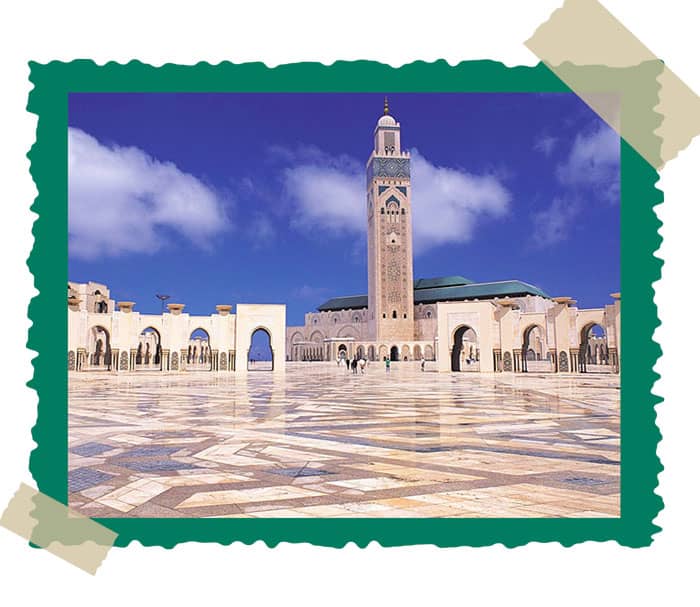
2. Discover the Medina of Casablanca – A Journey Through Time and Tradition
Step into the Medina of Casablanca, and you’ll feel as though you’ve traveled back in time. Unlike the more touristy medinas of Fes or Marrakech, Casablanca’s medina is less polished but more authentic and lived-in, offering a raw and genuine glimpse into everyday Moroccan life. Tucked behind ancient walls near the city’s port, this labyrinth of narrow alleys, modest homes, bustling markets, and centuries-old mosques reflects Casablanca’s rich history—from its Berber origins to its French colonial past.
There are actually two medinas in Casablanca: the Old Medina, which predates the French Protectorate and retains its traditional charm, and the New Medina, also known as Habous Quarter, built by the French in the 1930s. The Old Medina is ideal for those looking to explore hidden souks, interact with locals, and discover unexpected gems like Sidi Bou Smara Shrine or small artisan workshops. In contrast, the Habous Quarter is more organized and architectural, offering a blend of Moroccan design and French planning—with elegant archways, wide streets, and high-quality boutiques selling spices, olives, leather goods, and traditional garments.
For photographers, the medina provides endless visual interest—from peeling pastel walls and colorful fabrics to candid street scenes. For history lovers, it’s a living museum of Moroccan urban culture. For foodies, the aroma of grilled sardines, fresh bread, and sizzling tagines will tempt you to follow your nose.
Tip: Go with a local guide if it’s your first time. They can help you navigate the winding streets, share stories you won’t find in guidebooks, and take you to secret spots only locals know about.
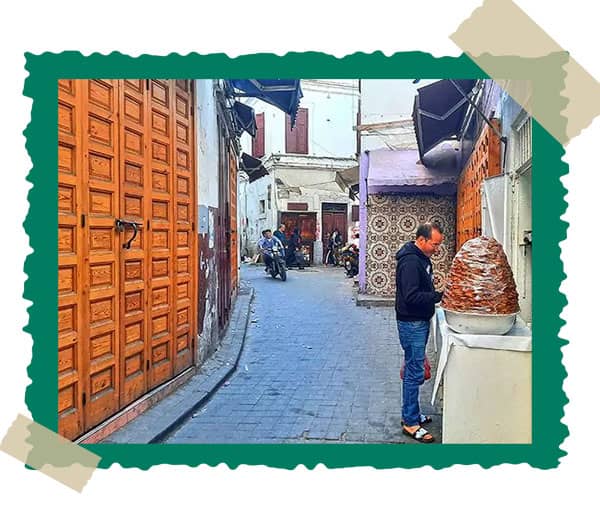
Ready to Discover the Magic of Casablanca?
From the towering minaret of the Hassan II Mosque to the golden sunsets along La Corniche, Casablanca is where tradition meets modern luxury. Lose yourself in the maze-like medinas, shop in chic boutiques, sip mint tea in hidden courtyards, and feel the rhythm of Morocco’s most cosmopolitan city. Whether you’re a history lover, a foodie, an architecture enthusiast, or simply seeking an unforgettable adventure, Casablanca is calling—and it’s time to answer.
3. Stroll Along La Corniche – Casablanca’s Vibrant Seaside Escape
For a refreshing break from the urban energy, head to La Corniche, Casablanca’s scenic seaside promenade that stretches along the Atlantic coast in the Ain Diab district. This area offers a dynamic mix of beach culture, luxury, and leisure, making it one of the best spots in the city for relaxation, people-watching, and entertainment.
La Corniche is dotted with beachfront cafes, upscale restaurants, nightclubs, and resorts, as well as public and private beach clubs where locals and tourists gather to sunbathe, swim, or play beach sports. You’ll also find international hotel chains like the Four Seasons, but there are plenty of casual spots perfect for sipping mint tea while watching the waves crash against the rocky shoreline.
As the sun begins to set, the Corniche transforms into a romantic setting with spectacular ocean views. It’s a favorite among couples and photographers capturing the golden glow over the Atlantic. For families, there are nearby attractions like Sindibad Park, an amusement park with rides and a small zoo.
Tip: Walk or rent a bike to explore the entire stretch from Ain Diab Beach to the lighthouse at El Hank for some of the best coastal views in Casablanca.
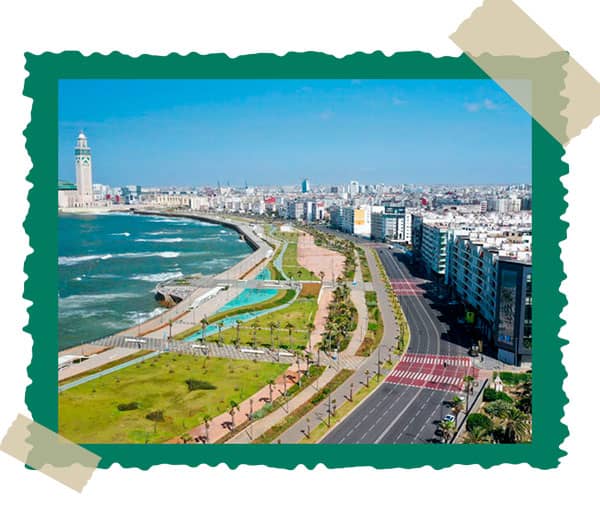
4. Experience the Magic of Rick’s Café – Casablanca’s Cinematic Tribute
Even if you’ve never seen the 1942 classic film Casablanca, visiting Rick’s Café is like stepping onto a movie set—an homage to the golden age of Hollywood and a nostalgic tribute to Morocco’s place in cinematic history. Located near the Old Medina, this recreated version of the fictional bar from the film captures the ambiance of the era with its arched doorways, vintage furnishings, brass chandeliers, and a grand piano that often fills the room with live jazz.
Opened in 2004 by an American diplomat and film lover, Rick’s Café is more than just a themed restaurant—it’s a fine-dining experience that blends international cuisine with Moroccan flavors, serving dishes like seafood pastilla, lamb shank with prunes, and classic French desserts. The atmosphere is elegant but relaxed, ideal for a romantic dinner or a stylish night out.
Even though the original movie was filmed in a Hollywood studio, Rick’s Café brings the fantasy to life with authentic decor and timeless charm. It’s a must-visit for film buffs, food lovers, and anyone seeking a unique Casablanca experience.
Tip: Make a reservation in advance, especially during dinner hours or on weekends. Ask for a seat near the piano for the full “Here’s looking at you, kid” vibe.
5. Explore the Habous Quarter – Casablanca’s Charming Blend of Old and New
The Habous Quarter, also known as the New Medina of Casablanca, is one of the city’s most delightful and underrated gems. Built by the French during the 1930s under the Protectorate, the district was designed to combine the layout of a traditional Moroccan medina with modern urban planning, resulting in an area that’s both orderly and rich in character. With its arched alleyways, whitewashed facades, tiled fountains, and clean, tree-lined streets, Habous offers a refreshing contrast to the chaotic charm of the Old Medina.
This neighborhood is ideal for travelers who want to experience Moroccan souk culture without the overwhelming crowds. You’ll find an impressive selection of shops selling everything from handcrafted leather slippers (babouches) and beautifully engraved brass lanterns to ceramics, Berber rugs, olives, dried fruits, and rare Moroccan spices. Don’t miss the Mahkama du Pacha, a stunning Hispano-Moorish-style building that used to serve as a courthouse and administrative office—it’s a true architectural masterpiece worth seeing, even if only from the outside.
Another highlight is the famous Bennis Habous Bakery, known for its exquisite Moroccan pastries like cornes de gazelle (almond crescents), briouats, and almond brioche. This bakery has been run by the same family for generations and is a favorite stop for locals and tourists alike.
Tip: The Habous Quarter is perfect for souvenir shopping at fairer prices than in Marrakech or Fes. Bring cash, bargain politely, and take your time strolling the peaceful streets. Early mornings or late afternoons are best to avoid the heat and enjoy the ambient local vibe.
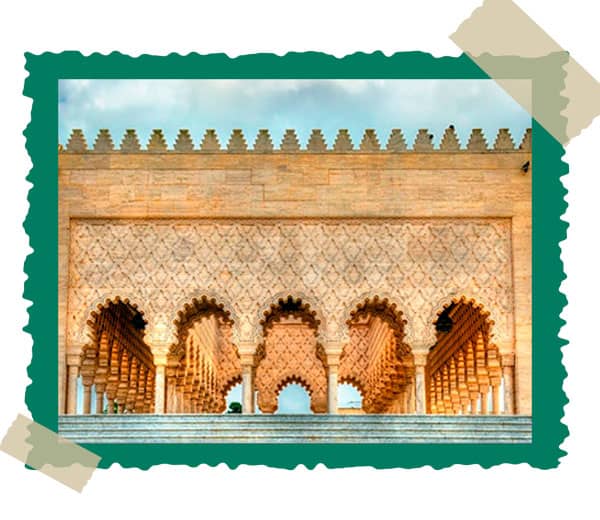
6. Experience Modern Casablanca – Morocco’s Cosmopolitan Heart
While many visitors come to Casablanca in search of history and tradition, the city’s modern side is equally captivating. As Morocco’s economic capital and largest city, modern Casablanca pulses with energy, innovation, and ambition. Skyscrapers, trendy restaurants, upscale boutiques, international banks, and sleek office towers paint a picture of a city firmly rooted in the 21st century.
At the heart of modern Casablanca is the bustling Maarif District, once a quiet suburb that has evolved into one of the city’s most fashionable neighborhoods. Here, you’ll find high-end shopping malls like Morocco Mall—the largest in Africa—featuring international brands, an indoor aquarium, a musical fountain show, and a beachfront promenade. Nearby, Anfa Place Shopping Center offers ocean views alongside cafes and shops, combining leisure with retail therapy.
The city also boasts a growing culinary and nightlife scene, with rooftop lounges, sushi bars, gourmet bistros, and fusion restaurants that reflect Casablanca’s global flavor. You can enjoy contemporary art at Villa des Arts, a cultural space that showcases Moroccan and international artists in a striking Art Deco villa, or attend film festivals and concerts at Megarama Cinema Complex and the Casablanca International Book Fair.
Modern Casablanca is also about infrastructure and innovation. The city is home to Casablanca Finance City, an emerging African business hub, and a well-developed tramway system that makes exploring neighborhoods easier and more efficient for locals and tourists alike.
Tip: To appreciate the contrast between old and new, take a walking tour that includes both the historic center and the skyscraper-dotted business districts. Don’t miss sunset drinks at a rooftop bar in Maarif or along the Corniche to see how Casablanca balances modern luxury with Moroccan soul.
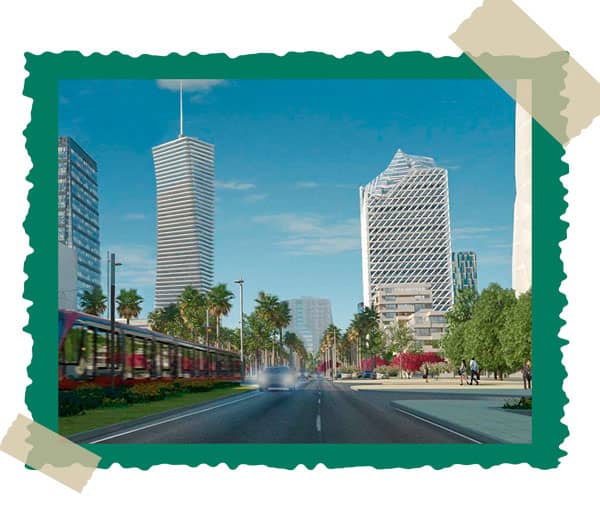
Ready to Discover the Magic of Casablanca?
From the towering minaret of the Hassan II Mosque to the golden sunsets along La Corniche, Casablanca is where tradition meets modern luxury. Lose yourself in the maze-like medinas, shop in chic boutiques, sip mint tea in hidden courtyards, and feel the rhythm of Morocco’s most cosmopolitan city. Whether you’re a history lover, a foodie, an architecture enthusiast, or simply seeking an unforgettable adventure, Casablanca is calling—and it’s time to answer.
Casablanca’s Infrastructure – The Backbone of Morocco’s Economic Hub
Casablanca isn’t just Morocco’s largest city—it’s also the beating heart of the country’s infrastructure, connecting people, goods, and ideas across Africa and beyond. From modern transportation networks to expansive industrial zones, Casablanca’s infrastructure reflects its role as a regional leader in business, logistics, and urban development.
One of the city’s most impressive achievements is its efficient public transport system, anchored by the Casablanca Tramway. This sleek, affordable network currently spans over 47 kilometers and connects major districts, residential areas, universities, business hubs, and cultural landmarks. It’s clean, reliable, and a popular way for both locals and tourists to navigate the sprawling city.
Casablanca is also home to Mohammed V International Airport, one of the busiest airports in Africa. It serves as the main gateway into Morocco for international travelers and a key hub for Royal Air Maroc, with direct flights to Europe, the Middle East, North America, and West Africa.
On the maritime front, the Port of Casablanca is one of the largest artificial ports in the world and a critical hub for cargo, trade, and industrial activity. It handles millions of tons of goods annually and supports Morocco’s position as a key player in regional commerce.
In terms of roads and highways, Casablanca is well connected to other major Moroccan cities via a modern motorway network, including the A1 and A3 highways leading to Rabat, Marrakech, and beyond. The city also benefits from ongoing urban development projects, such as the Casablanca Finance City (CFC)—a futuristic business district designed to attract multinational companies and serve as a financial gateway to Africa.
Utilities and digital infrastructure are also rapidly advancing. Casablanca has strong telecommunications coverage, expanding access to fiber-optic internet, and smart city initiatives aimed at improving traffic management, sustainability, and urban living standards.
Tip: If you plan to explore Casablanca extensively or commute during your stay, get a rechargeable tram card (M’dina Bus/Tram pass) or use ride-hailing apps like Careem or Heetch, which are popular alternatives to taxis in the city.
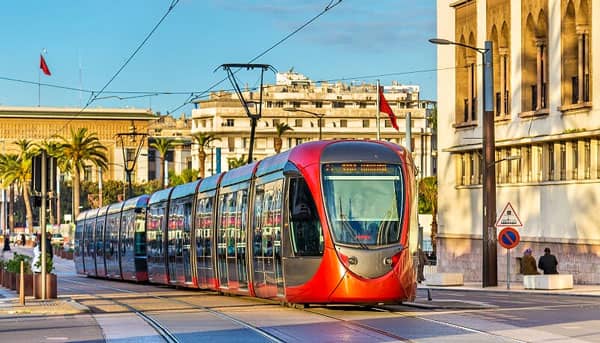
Is Casablanca Safe? Understanding Crime and Safety in the City
Casablanca is relatively safe for travelers, especially compared to other large cities around the world. Most visits are trouble-free, and violent crime is rare, particularly in areas frequented by tourists. However, as Morocco’s largest and most densely populated city, petty crime does exist, and visitors should stay alert—especially in crowded areas like markets, public transportation, and tourist hotspots.
The most common crimes reported by travelers include:
-
Pickpocketing in busy places like the Old Medina, tram stations, or during festivals.
-
Scams or overcharging, especially involving unofficial guides or unmetered taxis.
-
Bag snatching or phone theft in some less-patrolled neighborhoods, particularly at night.
More serious crimes such as assault or mugging are uncommon, but like any large urban center, they can happen—usually in isolated areas or late at night. Drug-related crime or gang activity rarely affects tourists.
To stay safe in Casablanca:
-
Avoid poorly lit or isolated areas after dark.
-
Keep valuables out of sight and use a crossbody bag.
-
Use official taxis or ride-hailing apps rather than unmarked cabs.
-
Be cautious when accepting help from strangers who offer unsolicited guidance.
The Moroccan police presence is noticeable in tourist zones, and tourist police are trained to assist visitors. Casablanca also has security cameras in many public areas, especially near banks, large malls, and the Corniche.
Tip: Travel insurance is always a good idea. And while Morocco is generally more relaxed than its reputation might suggest, dressing modestly and respecting local customs can help you avoid unwanted attention.
Best Day Trips from Casablanca – Explore More of Morocco in a Day
While Casablanca has plenty to offer, it also serves as a perfect launchpad for exploring nearby gems along the coast and inland. Here are three of the best day trips from Casablanca, each offering a unique slice of Moroccan history, culture, and charm, within easy reach by car or train.
1. Rabat – A Regal Escape to Morocco’s Capital (1-Hour Drive)
Just an hour north of Casablanca, Rabat offers a fascinating mix of history, elegance, and seaside beauty. As the capital of Morocco, Rabat is known for its clean streets, relaxed atmosphere, and historical landmarks, making it a perfect contrast to Casablanca’s buzzing urban energy. You can explore the stunning Kasbah of the Udayas, a fortress perched above the Atlantic Ocean with narrow blue-and-white alleyways and panoramic sea views.
Don’t miss the Hassan Tower, an unfinished 12th-century minaret that stands as a symbol of Morocco’s imperial past, and the Mausoleum of Mohammed V, where you’ll find stunning white marble and traditional Moroccan tilework. For a more peaceful experience, visit Chellah, a walled necropolis and Roman ruin surrounded by lush gardens and stork nests.
Tip: Rabat’s tram system makes it easy to get around. It’s perfect for a full-day cultural escape from Casablanca.
2. El Jadida – Coastal Charm with Portuguese Heritage (1.5-Hour Drive)
Located about 100 km south of Casablanca, El Jadida is a UNESCO World Heritage Site that was once a Portuguese colony known as Mazagan. Its historic Portuguese Quarter, enclosed by fortified walls, is home to colonial-era churches, narrow cobblestone streets, and the famous Portuguese Cistern—a hauntingly beautiful underground chamber that reflects light and water, often used for photo shoots and film sets.
This laid-back coastal town also offers lovely beaches, including Sidi Bouzid, where locals and tourists go to swim, surf, or enjoy fresh seafood. El Jadida’s mix of European architecture and Moroccan lifestyle gives it a unique identity, making it a must-see for history lovers and beachgoers alike.
Tip: The drive from Casablanca is smooth, and the city is small enough to explore on foot in half a day.
3. Azemmour – An Artistic Riverside Getaway (1-Hour Drive)
A lesser-known but utterly charming destination, Azemmour lies about 90 km south of Casablanca, along the Oum Er-Rbia River. This quiet town is known for its bohemian vibe, colorful street art, and relaxed pace, making it a favorite among artists, photographers, and travelers looking for an authentic Moroccan experience off the beaten path.
Wander through the Old Medina, where faded walls are painted with vibrant murals and motifs, and discover art galleries tucked into centuries-old buildings. The Jewish Quarter and old kasbah also add layers of history and character to this peaceful riverside town. Unlike more touristy destinations, Azemmour retains a very local feel, making it perfect for slow travel and quiet reflection.
Tip: Visit on a weekday to avoid crowds and consider combining Azemmour with El Jadida for a full coastal exploration.
Ready to Discover the Magic of Casablanca?
From the towering minaret of the Hassan II Mosque to the golden sunsets along La Corniche, Casablanca is where tradition meets modern luxury. Lose yourself in the maze-like medinas, shop in chic boutiques, sip mint tea in hidden courtyards, and feel the rhythm of Morocco’s most cosmopolitan city. Whether you’re a history lover, a foodie, an architecture enthusiast, or simply seeking an unforgettable adventure, Casablanca is calling—and it’s time to answer.
Other useful tips on How to visit Casablanca for the first time
Where to Stay in Casablanca
Casablanca offers accommodation for every budget. Here are top recommendations:
Luxury
-
Four Seasons Casablanca – Oceanfront luxury with five-star amenities.
-
Hotel Sofitel Casablanca Tour Blanche – Close to the Medina with spa and fine dining.
Mid-Range
-
Barceló Anfa Casablanca – Modern, centrally located with great business facilities.
-
ONOMO Hotel Casablanca City Center – Chic and affordable.
Budget
-
Hotel Central – Located in the Medina; simple and clean.
-
Youth Hostel Casablanca International – Great for backpackers.
Where to Eat in Casablanca
Traditional Moroccan
-
La Sqala: Set in a fortified 18th-century bastion, this restaurant offers classic Moroccan dishes in a romantic garden setting.
-
Dar Beida: Known for its ambiance and Moroccan music.
International Cuisine
-
Rick’s Café: Inspired by the movie Casablanca, it combines old-Hollywood glamour with a solid international menu.
-
Le Cabestan: Upscale seafood with ocean views—ideal for romantic dinners.
Street Food & Cafes
-
Try maakouda (potato fritters), brochettes (meat skewers), and fresh Moroccan orange juice from street vendors.
-
Enjoy a coffee at Pâtisserie Bennis Habous, a legendary bakery in the Habous Quarter.
Shopping in Casablanca
Casablanca offers a blend of traditional souks and modern shopping centers.
-
Morocco Mall: One of Africa’s largest malls; features international brands, an indoor aquarium, and a souk area.
-
AnfaPlace Mall: Modern shopping with Atlantic views.
-
Habous Souk: Ideal for buying spices, rugs, babouches (slippers), and ceramics.
Travel Tips for Visiting Casablanca
Dress Code
Casablanca is relatively liberal, especially compared to smaller towns. Still, modest clothing is appreciated, particularly in religious or local areas.
Language
The primary languages spoken are Arabic, Darija (Moroccan Arabic), and French. English is spoken in hotels and major attractions.
Safety
Casablanca is generally safe for tourists, but always be cautious with belongings, especially in crowded areas. Avoid isolated places at night.
Currency
The local currency is the Moroccan Dirham (MAD). Credit cards are accepted in hotels and restaurants, but carry cash for souks and taxis.
Connectivity
SIM cards from Orange, Maroc Telecom, and Inwi are available at the airport and local kiosks. Wi-Fi is widely available in hotels and cafes.
Is Casablanca Worth Visiting?
Absolutely. While it may not offer the ancient medinas of Fes or the desert adventures of Merzouga, Casablanca is Morocco’s modern heartbeat—a dynamic blend of tradition, innovation, and diversity. It’s a city that invites you to look deeper, feel the pulse of contemporary Moroccan life, and discover a side of the country often overlooked.
Whether you’re drawn by its architecture, coastline, or cultural depth, Casablanca is more than just a stopover—it’s a destination in its own right.
